Many artists have a fascination with water and enjoy capturing it in their work. I’m one of them! I began to focus mainly on water subjects almost 20 years ago, particularly water with reflections, as I realised that it, and the human form, were the two subjects I loved to paint the most. I really enjoy and revel in the moment of anticipation as I build my subject and the water starts to feel wet and alive.
Fortunately, Australia is surrounded by oceans and I don’t live that far from it. I’ve also spent many holidays or painting excursions near water — even if it’s near rivers or a lake, they’re places that fill me with joy and provide endless inspiration.
To get the best understanding of water and its various ‘moods’ I simply sit and observe it; sometimes for long periods observing how it flows, its power, the colours in different light, the cast shadows, the transparency and depth within a rolling wave, and so much more — all if possible, whilst sketching or painting. Our brain retains visual observations made from life much more than simply taking a few snapshots and moving on. This is why advocates of plein-air painting are so adamant that artists must be out in the elements and paint or draw to take in all the visual knowledge that the landscape offers. I’m a plein air and studio painter, and I also believe that if you’ve experienced a subject enough outdoors, that knowledge comes with you into the studio and helps to enhance work created using photo references. I don’t believe that there’s only one way of doing things, nor that you’re not a true artist if you don’t paint from life. It’s what works for you and what you believe to be true about the work you create that’s important, no matter how you do it, no matter the opinion of others.
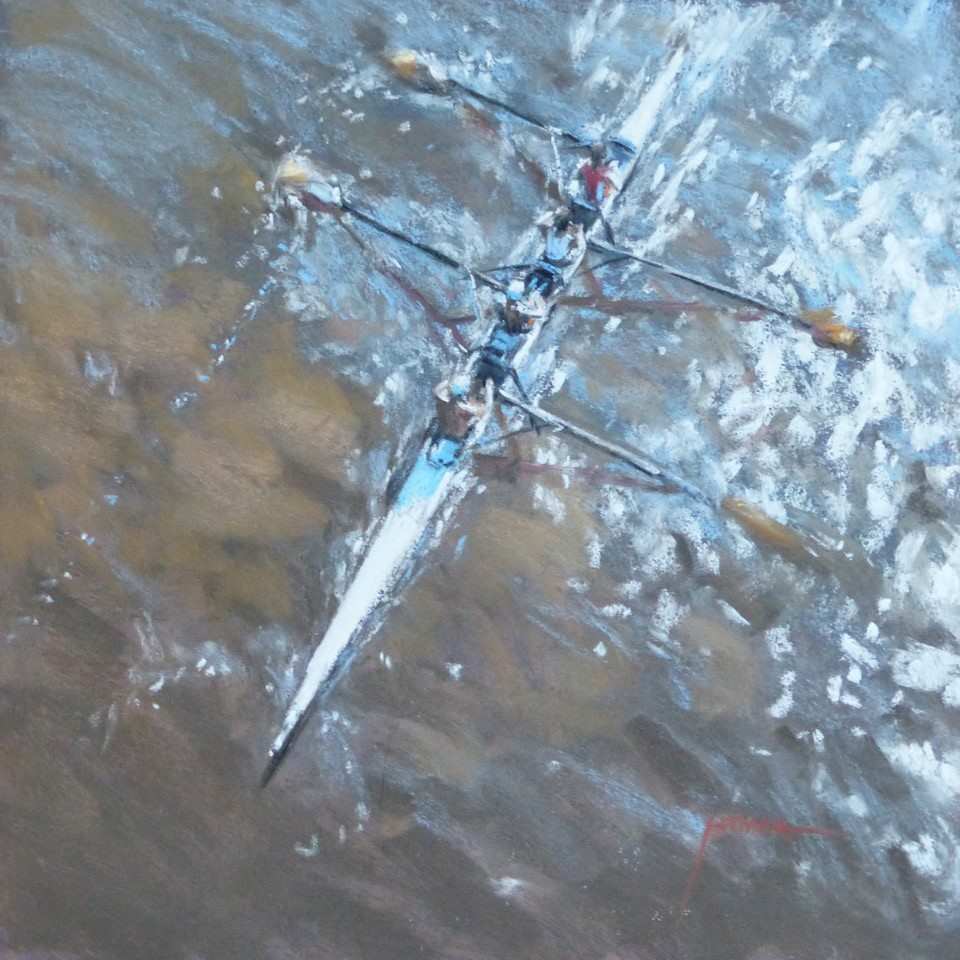
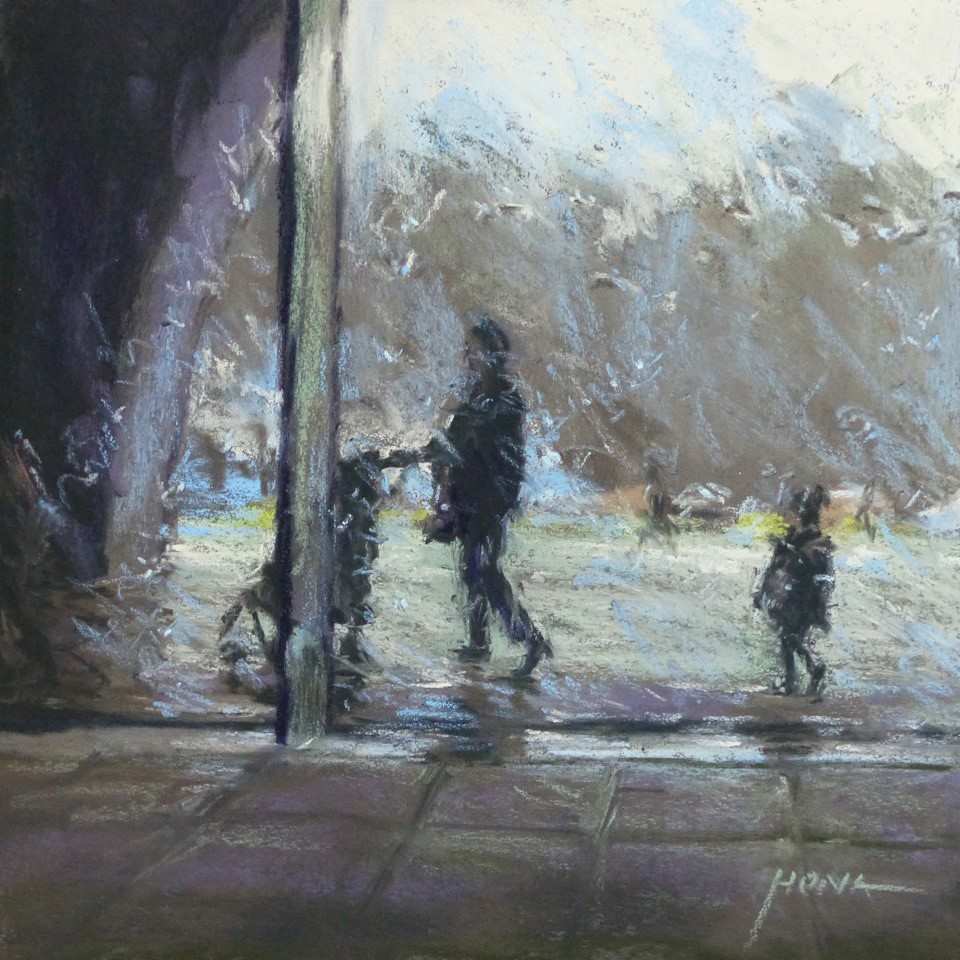
Water can be painted in a variety of settings from oceans to lakes or rivers and even through the use of clouds which we know is water but in a different form. The effect of reflections, shadow and sunlight plus the atmosphere we feel around such subjects further enhances the mood of my paintings. Like any subject we learn to paint, it takes repetition to gain mastery of it. Photos, being flat can only give us so much, although they are useful for studying more closely the structure of a tumbling wave or the form of a boat. It’s your observations and experiences either studying the landscape or painting plein air that’ll give your paintings a life and atmosphere of their own, especially in shadow areas.
When I paint water, I mostly paint in layers and often glaze one colour over another varying the pressure of the pastel as needed. I avoid blending, preferring the pastel pressure to do it for me. The Unison pastels allow me to do this so easily as they are the perfect softness for this technique. For paper I like to either use a neutral AS Colourfix Elephant colour or a warm paper like AS Colourfix Raw Sienna. Any other orangey brown colour is also good as it’s the complementary colour to water that I like to use. Specks of my paper always show through when I’m finished, which helps give an extra zing to my subject. The new Unison Colour ‘Lainey’ bracken/ochre colour is very close to the colour I use, and I look forward to trying out the UC paper once it’s available in Australia.
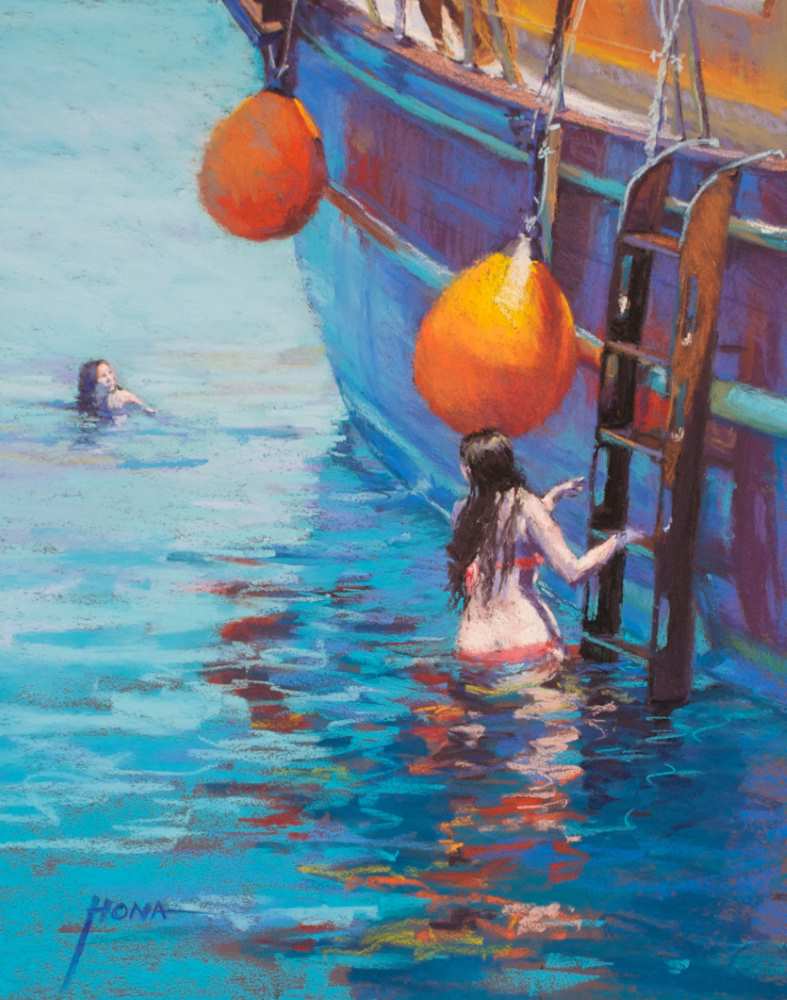
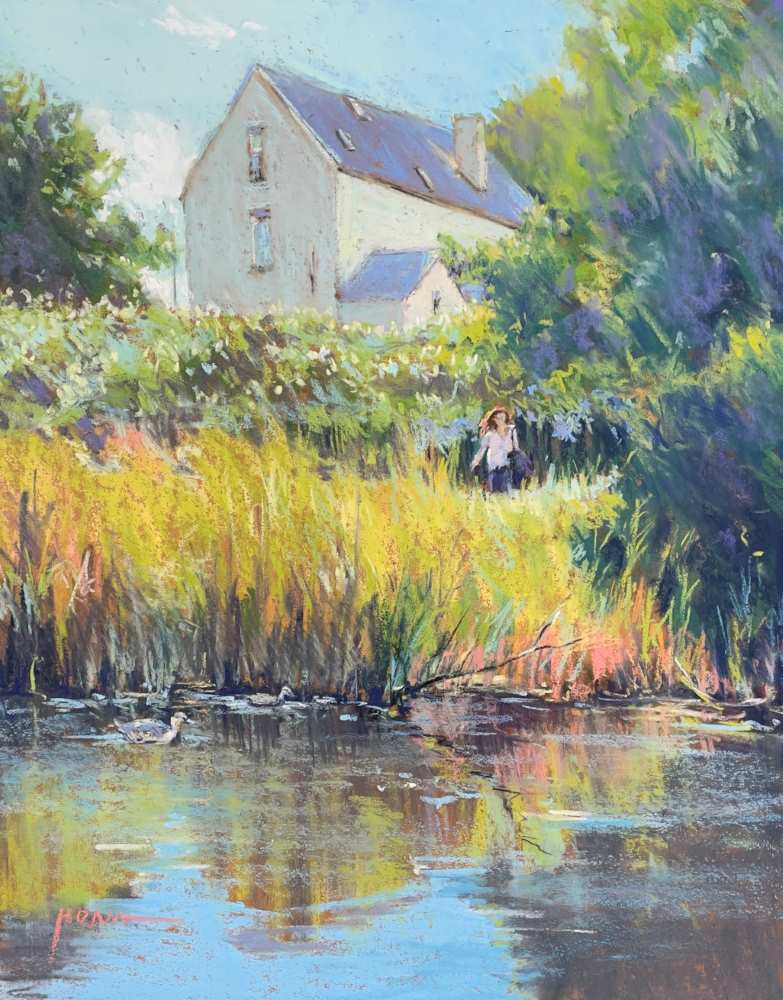
To achieve water depth I start with the dominant colour layer I see underneath as if the water is still. Squinting helps to judge this. Water is no different to other objects, where we need to use three to four values to create form, movement or depth. I reserve the lights bouncing off the water to go on last. These final strokes, often in pale blue, violet or turquoise are what really bring the water to life and makes it look wet.
Here are some extra things to take into account when painting water subjects:
- Water needs to have a landscape perspective to create distance and visual depth, just like in landscapes. This applies to the width and length of the strokes, and the depth and colour value of the water. The foreground strokes are broader and longer, which get narrower and shorter or non-existent as they recede.
- If a large boat is my focal point I avoid placing the waterline of the boat halfway down the painting — it tends to cut the painting in half, especially if including a substantial reflection.
- Reflections under boats are usually darker than the boat itself. I’ve noticed that the midday sun can cause exceptions, making them look the same, but in a painting, one has to be darker than the other to give the work depth.
- Reflections of people in wet sand and shallow water are usually warmer and lighter than their shadows.
- I avoid obvious vigorous strokes if my aim is to paint calm, flat water.
- It’s important to avoid hard edges in water reflections even if the water is still.
- I prefer to apply my water strokes horizontally, initially with the side of the pastel and then with the tip when more detail is required. Occasionally I’ll drag the pastel or my finger lightly down a section to blur an edge and make a reflection more realistic.
- Remember that light bounces off water, so use it well to lead the eye and to help create form and interest.
- When painting the reflections of boat masts, posts, pylons, and trees, whether angled or upright, make sure that they are directly underneath and correct. Straight masts have straight reflections. Angled masts, ropes, posts or trees have angled reflections.
- I usually paint my reflections as zig-zag lines of masses with broken edges, even if the water is dead calm. This aids in quickly seeing the difference between the physical object and its cast shadow or reflection. Without it, it looks unnatural.
- To add movement and life to your water subjects use any of the following — clouds; birds; dogs running on the beach or in and out of the water; people walking, running, fishing, or swimming at the beach (correct heights are crucial); children playing in the sand; sailing or fishing boats; water sprays onto rocks or off waves to show wind; using vigorous and bold strokes.
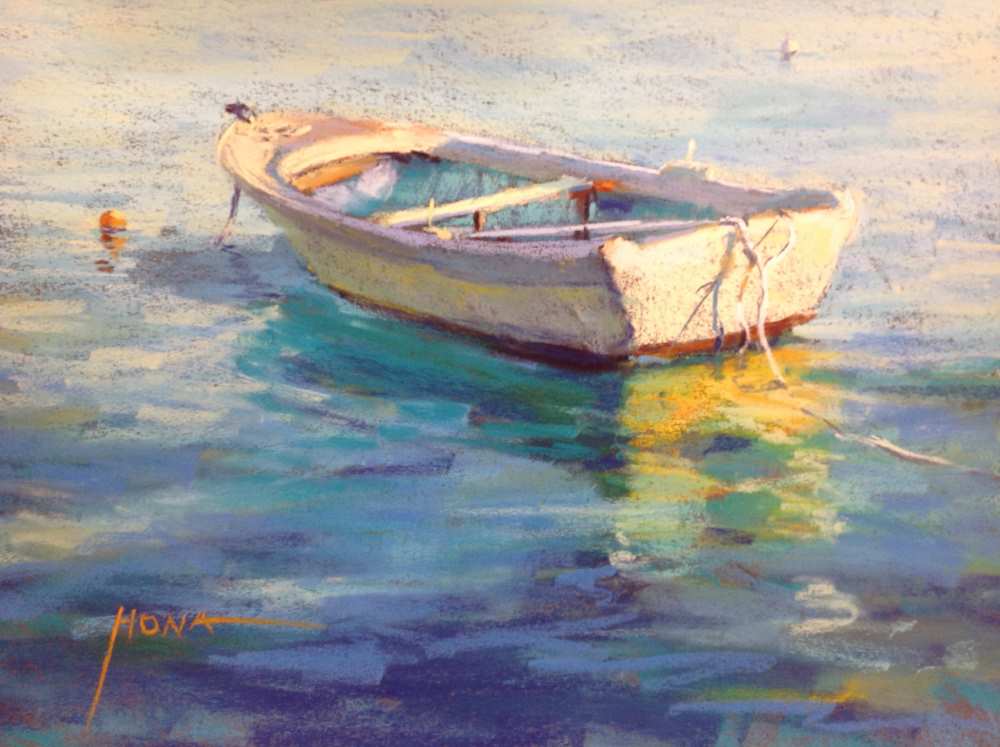
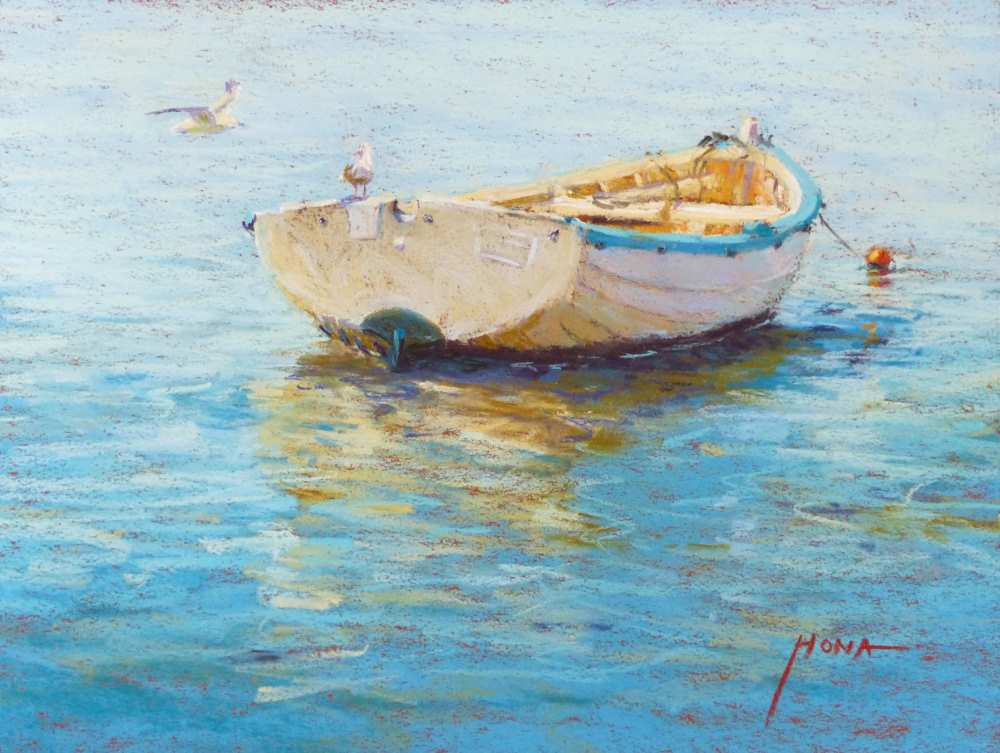
I found my artistic voice when I started painting water, especially when depicting its magical reflections and the enjoyable challenge of creating water movement. Like any subject we paint, we only get better and better the more we focus on and paint it. If this is your subject, may you find value in my thoughts above, and if water is a subject you want to try, I hope you find it as inspiring and exciting as I do.
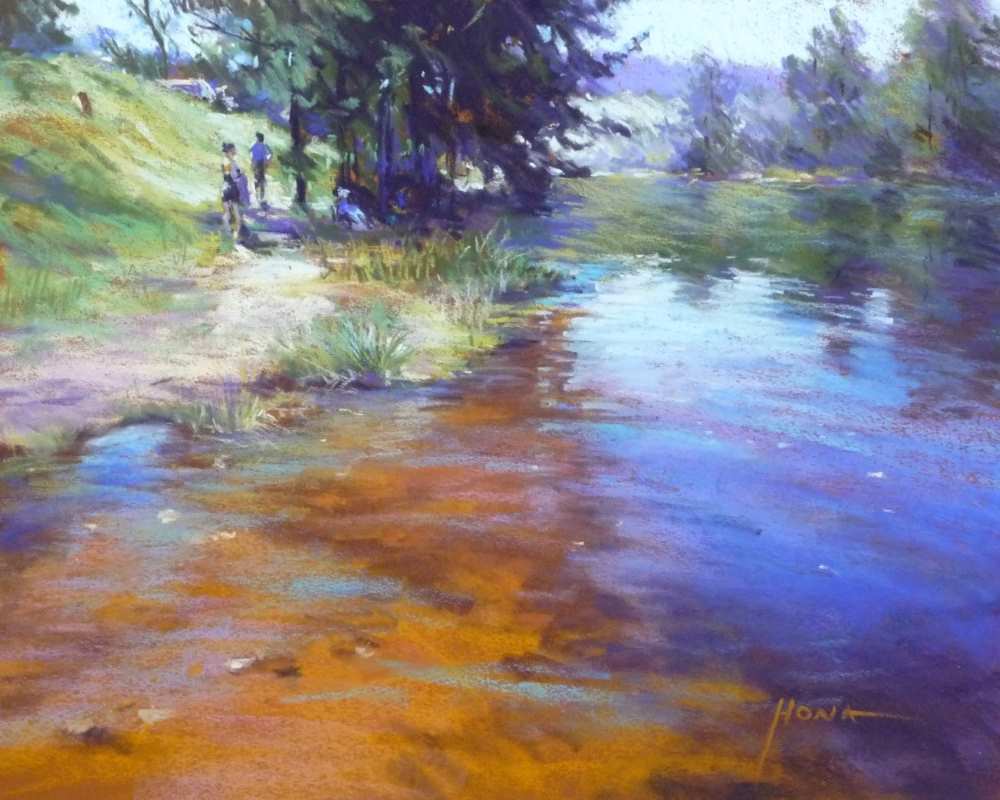
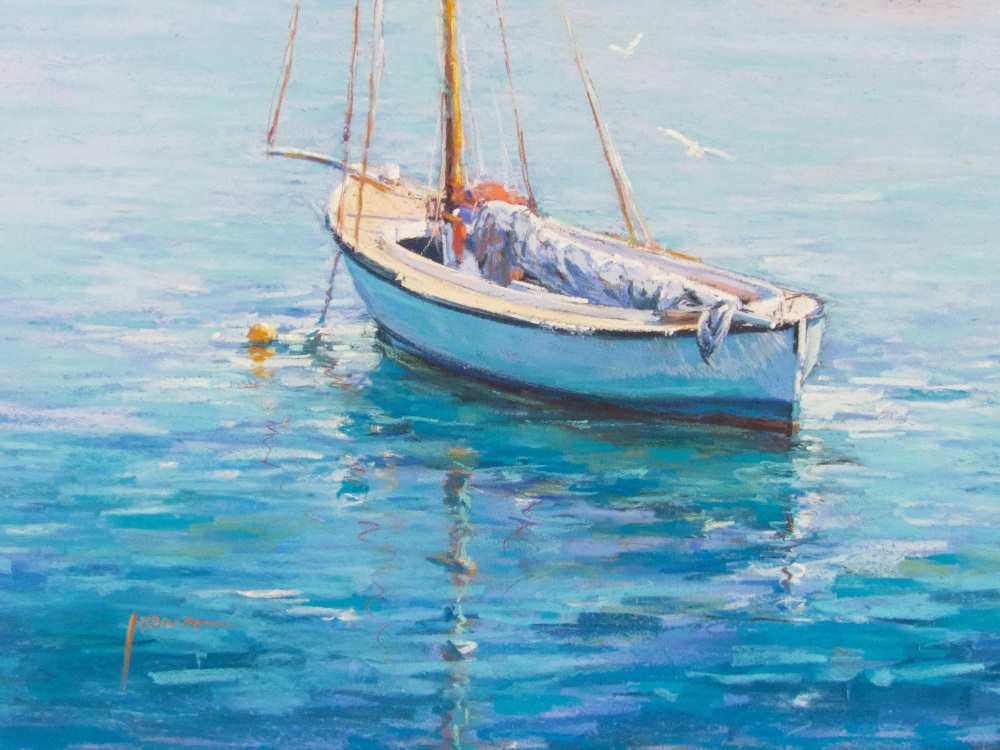
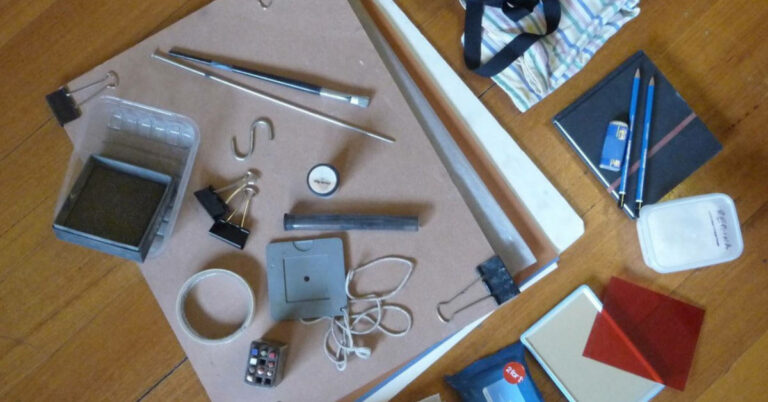
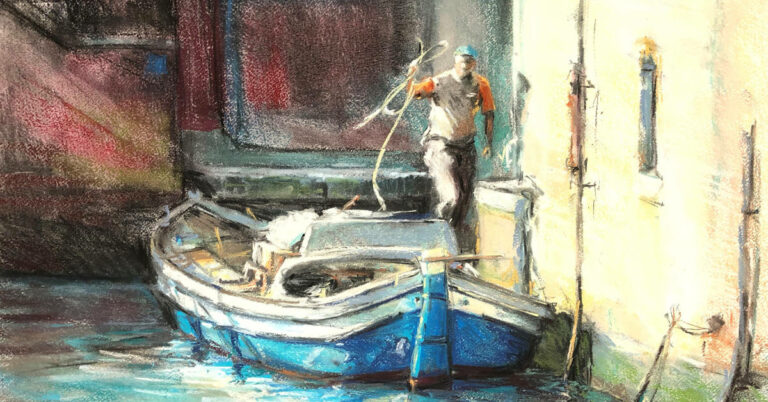
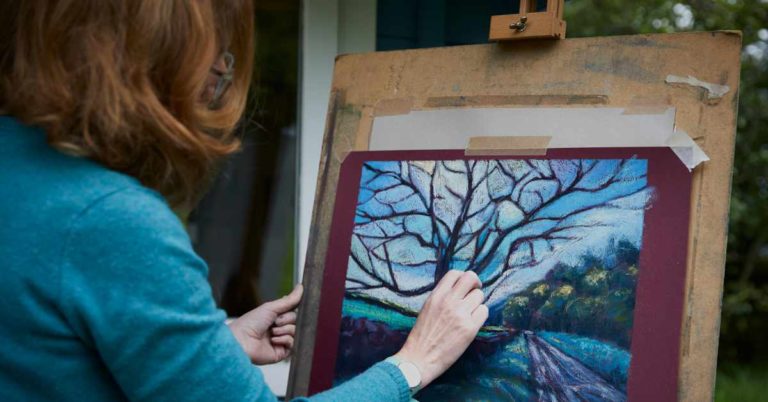
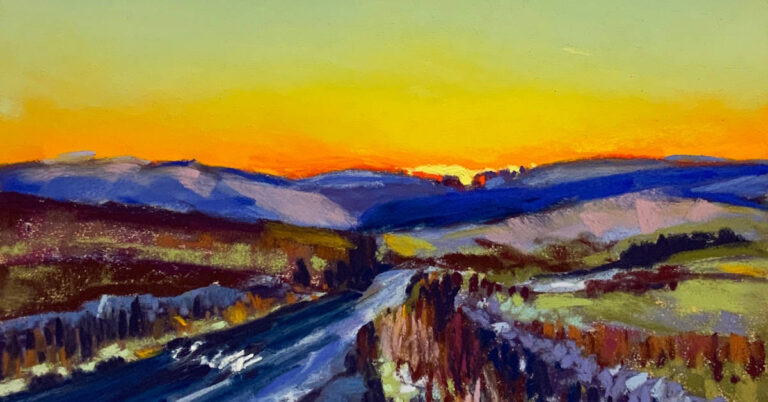
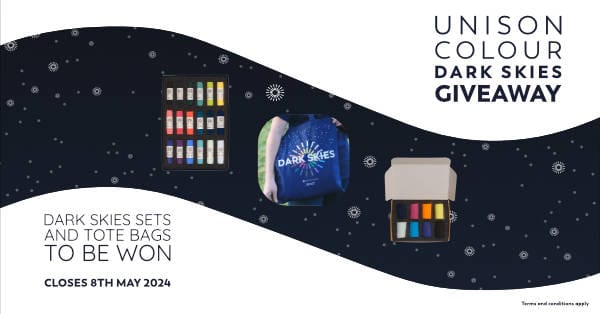
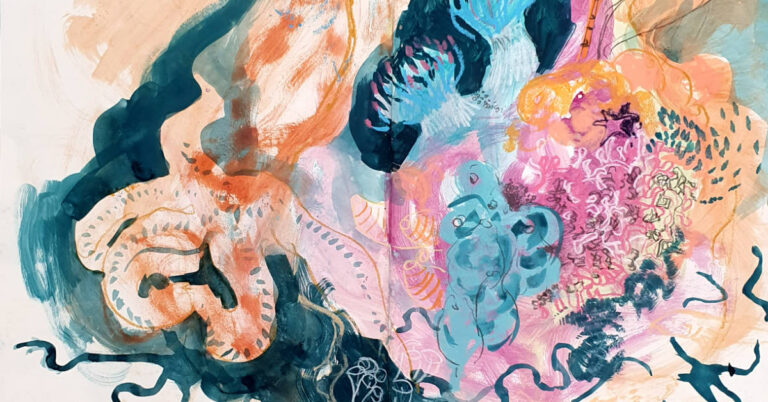
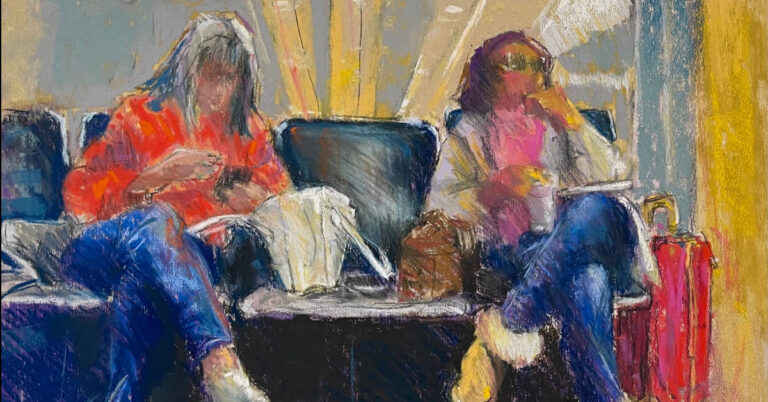
2 Responses
Brilliant,
I am 71 years old and live by the North East Coast uk.
Most of what I see is some lovely waves specially winter.
There are areas for rock pools and a lot of reflections..
What you have done is brilliant.
I wonder if you have done reflections on rivers and surrounding foliage etc.
What a very informative blog with many useful hint and tips.
I am a late starter and just finding my handwriting style. Your blog as given me much inspiration. Thank you.